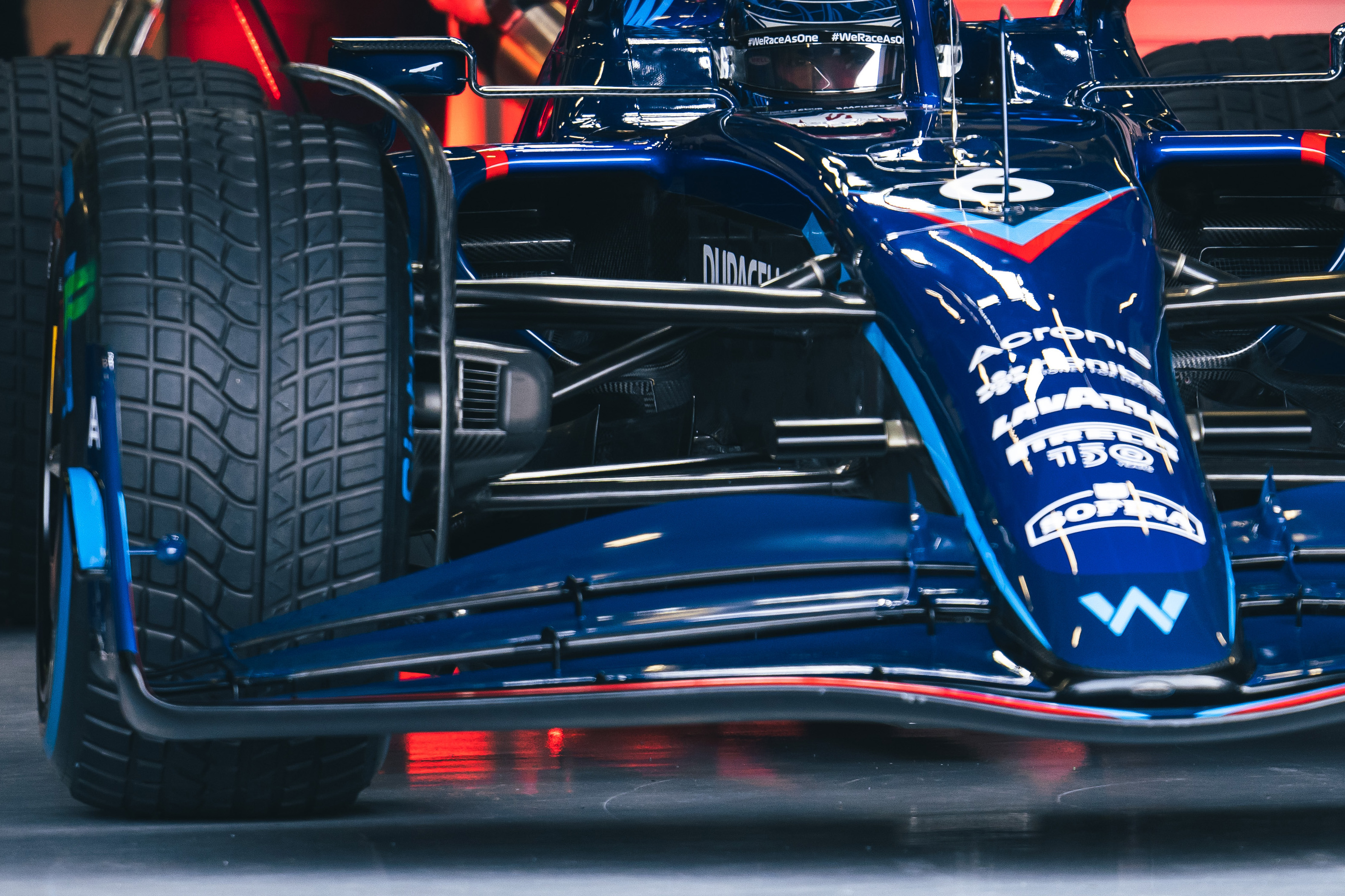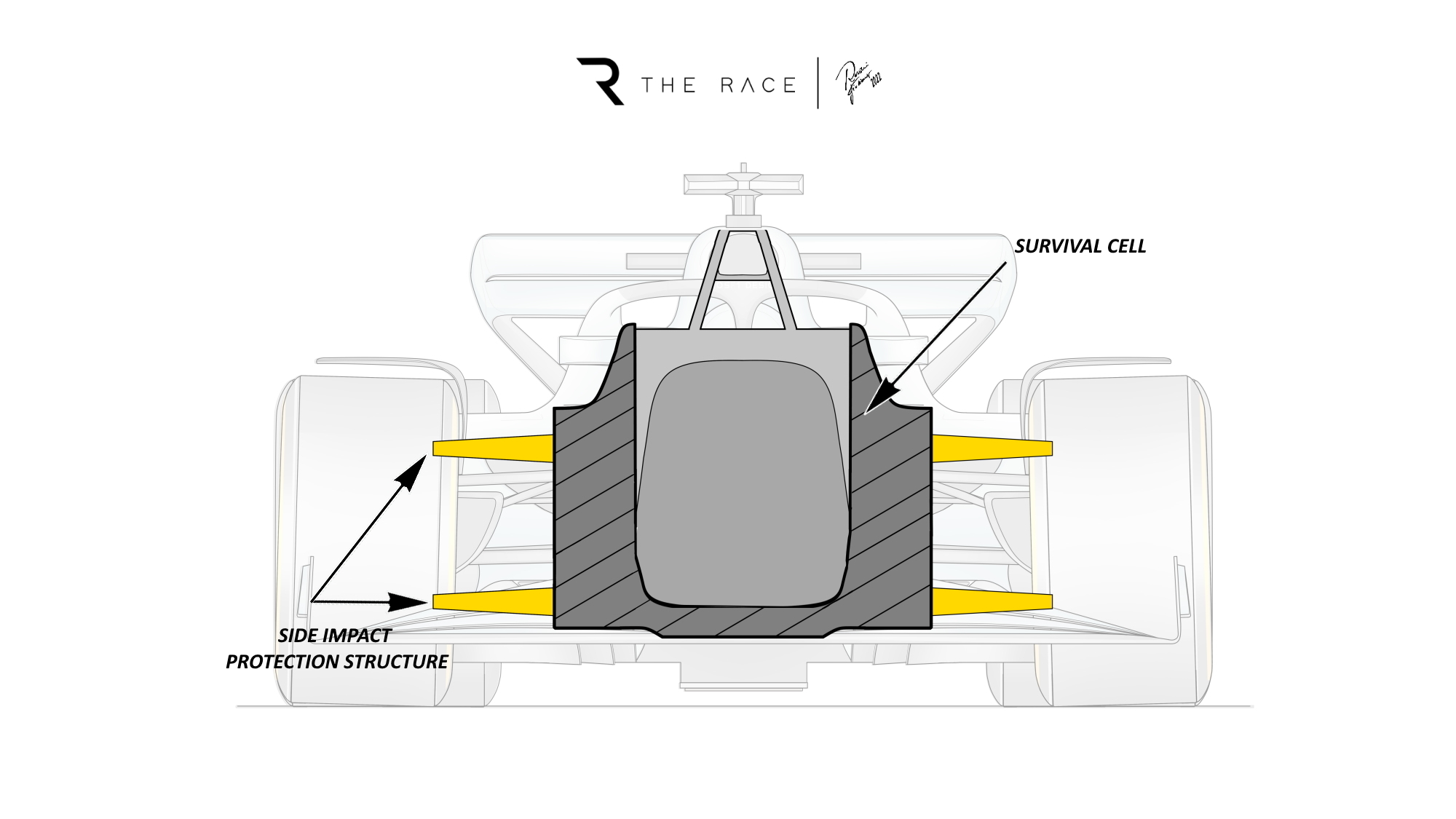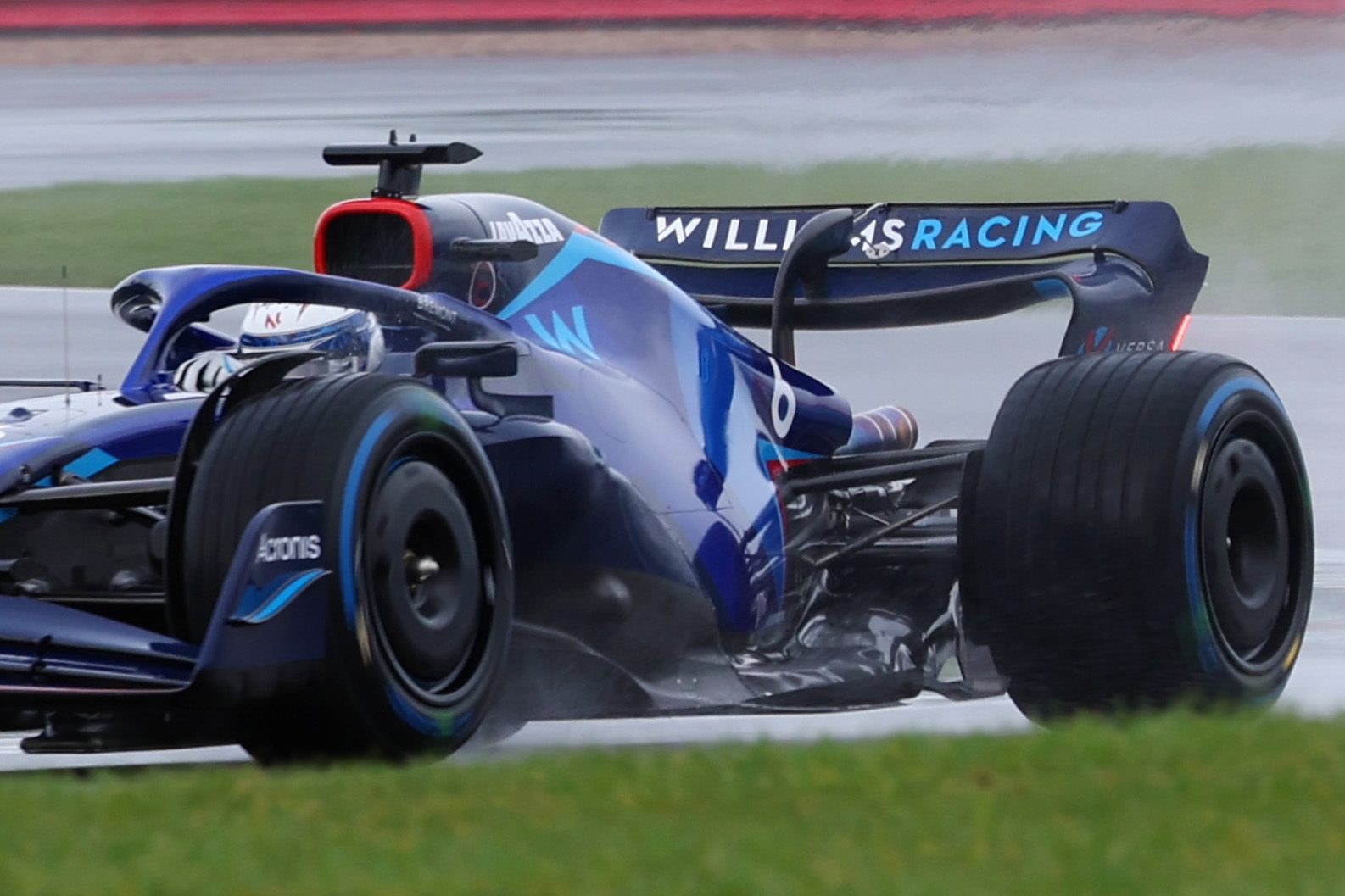Another day, another 2022 Formula 1 car launch and after the false start of the show car being revealed the real Williams FW44 had its first run at a very wet Silverstone.
That does show it has a complete package, which means it’s one of four teams along with Aston Martin, Alfa Romeo and AlphaTauri to have hit the track with a 2022 car.
Well done to all because this is not an easy task with a completely new set of regulations.
Williams has benefited from the talents of George Russell for the last three years and from the low point in 2019 has made progress – especially in 2020. The first of those three years was a disaster with a late start and a car that was well off the back of the pack, but since then the company has changed dramatically.
Big smiles today 😁 Felt amazing to get a taster for the season to come! A lot of hours put into this car and isn’t she a looker 😍 lets do this 💪😤 @WilliamsRacing pic.twitter.com/Qg9ZYNQeIi
— Alex Albon (@alex_albon) February 15, 2022
Although the name above the door is still the same, Williams has new owners in Dorilton Capital, a new management structure under Jost Capito and a new technical director in Francois-Xavier ‘FX’ Demaison. But it always takes time for new people to get their feet under the table. I don’t see why it will be any different for Williams.
These new regulations for 2022 offer a big opportunity to close the gap to the midfield.
Williams was there on a few occasions last year and Russell even made Q3 several times, but to show progress it needs to be in Q2 with both cars on most occasions.

Alex Albon may be able to help the team there. He will need the tools to do the job, but he does come in with experience of how a top team in Red Bull goes about its business. If that is used correctly, that can only be a bonus for Williams.
So let’s have a look at the car, which we have only had a limited look at with just two images released from the shakedown.
NOSE AND FRONT WING

This appears to follow the trend of Aston and McLaren with a full-width slot gap between the first element and the second element. This is mounted underneath the nose.
From there on in, it’s a bit different in that it is loading the inboard end of the front wing much more than any of the other cars we have seen.
To me, this is a little strange as the airflow coming off the trailing edge of this section of the wing is what the leading edge of the underfloor is going to have to work with so beating it to death before it gets there is never a good idea.
The third and fourth elements have a short section fixed to the sides of the nose, but the majority of the fourth flap is adjustable. From what I can see, it is set at a higher angle than the angle of the fixed part meaning they are searching for front grip. Yes, it was wet at Silverstone but I wouldn’t have expected to see this amount of offset in angle even in these conditions.
It could be to generate a vortex going down the underfloor but this would mean its strength would change with front wing angle so not the way to get consistency.
The outboard ends of the flaps sweep down as per the regulations into the lower part of the endplate, so there is no real extra front load to find from there.
FRONT SUSPENSION
This is a conventional top and bottom wishbone with the inboard components pushrod-operated.
The steering track-rod seems to be in line with or part of the forward leg of the upper front wishbone. These components working together become one and this can increase the chord length so gives a little more control over the air flow coming off the trailing edge of the front wing flaps.
The actual geometry looks sensible with fairly flat wishbones. I was never a fan of the previous generation of F1 cars with their acute upward wishbone angles from the wheel to the chassis and always believed this would generate jacking when the car was loaded up mid-corner.
I know the aerodynamics took priority, but I’m pretty sure there was a better compromise available that would have been an improvement in actual tyre grip as opposed to everything just relying on more aerodynamic load.
With the new-for-2022 18-inch rims and slightly lower chassis, there is more room inside those rims to optimise the geometry. This is the approach most teams have taken to some degree so far.
FRONT BRAKE DUCTS
Because the regulations are very prescriptive in this area, we are not seeing too much variation. The inner brake duct face runs into the over tyre mudguard and the only difference is in the actual brake duct inlet itself.
The version on the Williams is fairly simple. It has fins across it to keep sandwich wrappers out of them and this area will be replaceable with different sizes to suit different circuit requirements.
SIDEPOD LEADING EDGE
The radiator intakes and sidepod leading edge look fairly brutal. The Williams has probably the biggest inlets we have seen so far and being triangular they are more like what we saw on last year’s cars.
Inside those ducts you can see the upper side impact structure. This is a tube that sticks out from the side of the chassis, with another one low down that will be integrated with the floor surface.

These are to reduce the loads in a side impact and all cars must have them within a certain area as per our drawing.
SIDEPOD PROFILE
Very abrupt is probably the best way of describing it. It sweeps in and downwards dramatically. Basically, it is simply housing the radiators that are required for the cooling.

AIR INTAKE
This is a fairly rectangular design with a horizontal splitter separating the airflow to the turbo from the airflow used for cooling.
RADIATOR EXIT
It looks like Williams has simply chopped the sidepods off at about the front of the rear tyre, leaving a gap to the gearbox casing for the radiator exit. The gearbox case then becomes the inner Coke bottle surface.
You couldn’t get it much narrower than that, so the opening to the inside of the rear tyre will be as big as possible. However, sometimes in the interest of turbulent flow it is better to smooth everything out with some bodywork.
There is also some exit area in the engine cover body work where it wraps over the exhaust tail pipe.
COKE BOTTLE AREA
There is very little left to make this area any wider, so the maximum of the diffuser upper surface is touched by the airflow going through that area.
REAR SUSPENSION
This is a top and bottom wishbone with pullrod-operated inboard components.
The lower wishbone is at rear wheel centre line so it will probably shroud the driveshaft. Anything that can be done to reduce the blockage through this area is good for overall aerodynamic performance, as blockage simply reduces the airspeed and, in turn, reduces the energy in that airflow.
REAR WING
The regulations in this area are very prescriptive so its spoon shape is very similar to what we have seen on the other cars released. This spoon shape will vary in size depending on circuit requirements.
It’s nice to see a central wing support that blends into the DRS actuator. Even better for me would be no DRS actuator, but I’m not holding my breath for that.
CONCLUSION
It’s difficult to see much of the detail from the pictures Williams has released and time will tell where it’s stands as far as performance is concerned, I expected a little more. It’s neat and tidy but I’m not seeing that ‘wow’ factor.
The treatment around the rear looks like it is a little unfinished and the focus on the requirements of what the leading edge of the underfloor requires seems to have been missed.
Let’s see what the car looks like come the start of the Barcelona test.



